Samagra ID Madhya Pradesh
- Sections
- Objectives of Samagra Portal
- What is Samagra?
- Benefits of Samagra ID
- Samagra Family ID and Member ID
- How to Register Family for Samagra ID?
- How to Register Family Member in the Existing Family Samagra ID?
- How to Search Samagra ID?
- How to Find New/ Temporary Family/ Members?
- How to Know your Search Request?
- References
- FAQs
On the Samagra portal, complete information of all the families and its family members residing in the state such as name, father's name, caste, occupation, education, marital status, financial status, beneficiaries of the scheme, savings account number, BPL, disability , etc. data are available.
Through the overall social security program, the schemes run by the state government are being made easy and easy to reach the beneficiaries and to make their targeted results effective and the schemes are being simplified.
On the basis of analysis of various meetings with senior officers of various departments like Labour, Tribal Welfare, Public Health and Family Welfare, School Education, Urban Administration, Backward Classes and Minorities Welfare and Agriculture Department etc. to get observation and guidance of Hon'ble Chief Minister on October 10, 2010 and June 30, 2011, 4 groups (Task Forces) were constituted as follows:
|
Group |
Components within the group |
Group Head |
|
First Group |
Maternity Expense Assistance, Maternity Relief Assistance, Medical Assistance |
Principal Secretary, public health and Family welfare department |
|
Second Group |
Scholarships & Scholarships & Education Incentives |
Principal Secretary, Tribal Welfare Department |
|
Third Group |
Pension, Marriage Incentive, Insurance & Ex-gratia & Funerals |
Principal Secretary, Social Justice Department |
|
Fourth Group |
Providing transparency and computerized information on the website, preparing a database of the beneficiaries, preparing and supplying a card to transfer the amount through e-banking to their accounts |
Secretary, Department of Information and Technology |
Objectives of Samagra Portal
- Rationalization of rates of scheme and assistance amount
- Simplifying Rules and Procedures
- Transparency and making computerized information available on the website
- To provide all the facilities to the beneficiary at one place as much as possible
- Dissemination of information about plans and programs
What is Samagra?
Government of Madhya Pradesh '' follows the principle of 'Bahujan Hitay Bahujan Sukhay', i.e. the weakest, poorest section of the society like the old, labor cadre, disabled, girls, widows and abandoned women and children, living in Madhya Pradesh, to avail complete social security to these members. For this the entire mission of M, innovative initiative for the active and successful implementation of all beneficiary oriented schemes.
Benefits of Samagra ID
- The benefits of the schemes are eligibility based i.e. if the beneficiary is eligible for any schemes on the basis of the overall portal, then he will be provided the benefits of the schemes as per the rules.
- Through the Samagra social security programme, the state government-run schemes have been facilitated and simplified to reach out to the beneficiaries and to make their targeted outcomes effective and the schemes have been simplified.
- Ineligible beneficiaries will be removed from the programmes
- The beneficiary will start receiving quick benefits in the form of jurisdiction on the basis of his/her eligibility.
- Immediately after sanction of assistance, assistance will be available to the beneficiary through the bank/post office. He will not have to make rounds of offices.
- There will be transparency in the scheme. Information to beneficiaries will remain on the portal
- Nationalized banks will be instrumental in opening verified information savings accounts of citizens
- The beneficiary will be exempted from repeated applications and government offices will be exempted from the work of repeated verification.
Samagra Family ID and Member ID
All the families and family members residing in the state will be registered on the Samagra portal. Along with the registration of family and family members on the portal, the entire family ID of 8 digits for the family will be provided automatically from the portal. And for the family members, the member ID will be 9 digits. This entire family ID is generated. and member id. Get the benefit of any government scheme. helpful to do. Both of these complete family IDs. and Member I.D. a unique ID
How to Register Family for Samagra ID?
Follow the below steps to register family for samagra ID.
-
Visit the Samagra Portal
- Click on ‘Register family’ under ‘Register family/ member in Samagra’.
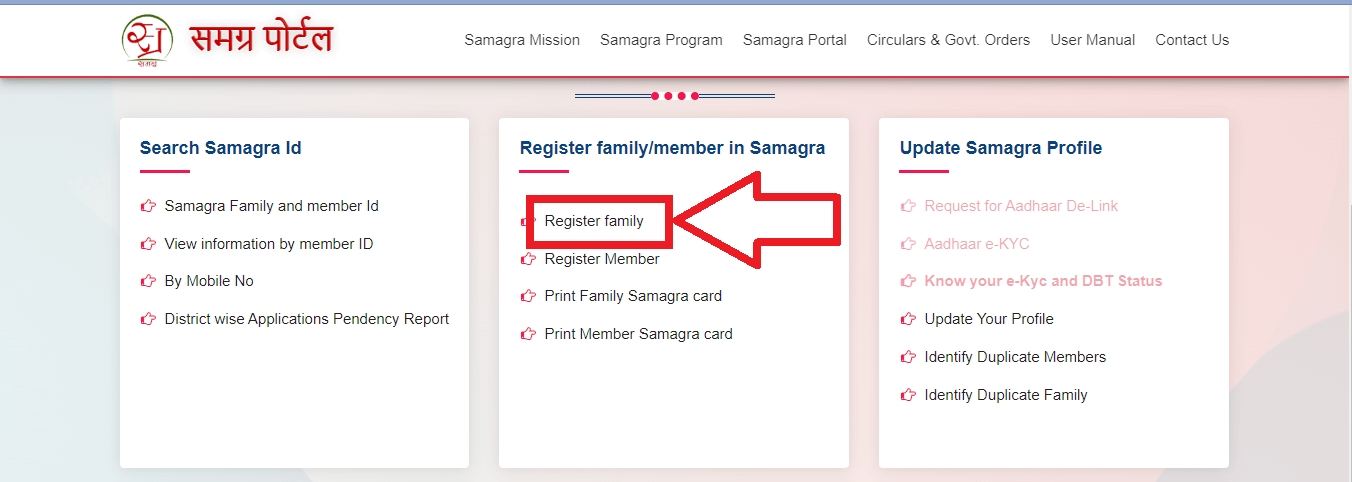
-
Enter your mobile number registered with Aadhar.
-
Request for OTP on the registered mobile number.
-
Enter the OTP received on the mobile number and click on ‘Submit’.
-
An application form will open on your screen.
-
Enter all the details related to the family.
-
Add the family members to the Samagra ID. Select either of the two options.
-
Members age till 5 (without aadhar card)
-
Add members of all age groups (with aadhar card)
-
Enter all the required details of the family member.
-
Click on ‘Register Family’.
-
You will receive the request Id.
How to Register Family Member in the Existing Family Samagra ID?
Follow the below steps to register family member in the existing family Samagra ID.
-
Visit the Samagra Portal
- Click on ‘Register member’ under ‘Register family/ member in Samagra’.
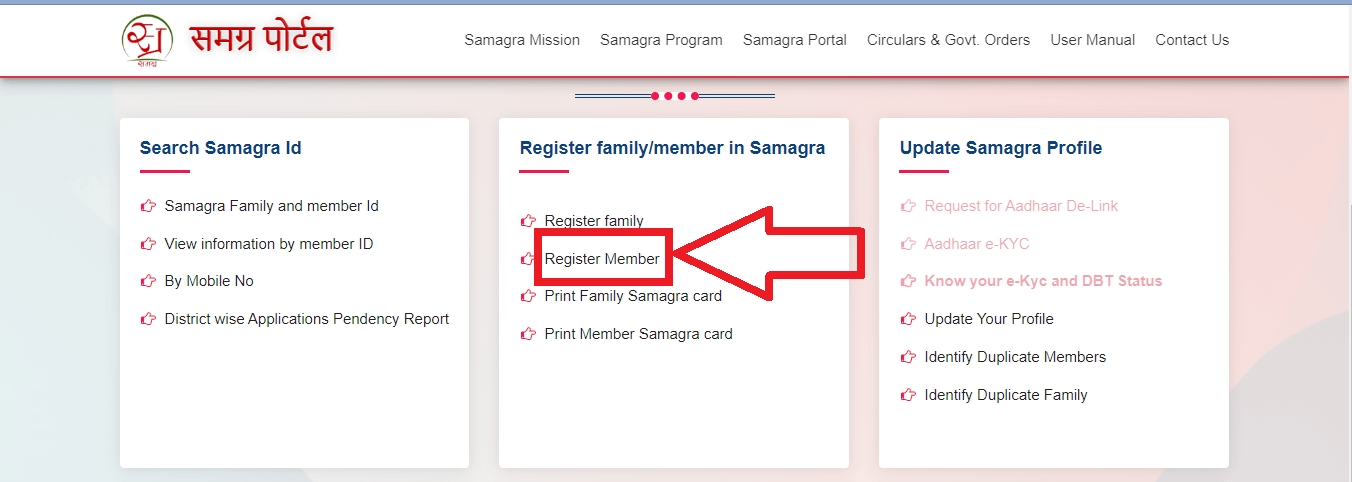
-
Enter the mobile number registered with your Samagra ID.
-
Enter your mobile number registered with Aadhar.
-
Request for OTP on the registered mobile number.
-
Enter the OTP received on the mobile number and click on ‘Submit’.
-
Family details will appear on the screen.
-
To add a family member, select either of the two options.
-
Members age till 5 (without aadhar card)
-
Add members of all age groups (with aadhar card)
-
Enter all the required details of the family member.
-
Click on ‘Register Member’.
How to Search Samagra ID?
Follow the below steps to search Samagra ID.
-
Visit the Samagra Portal
-
Here you can search the samagra ID in 3 ways.
-
Samagra Family and Member ID
-
View information by member ID
- By mobile number
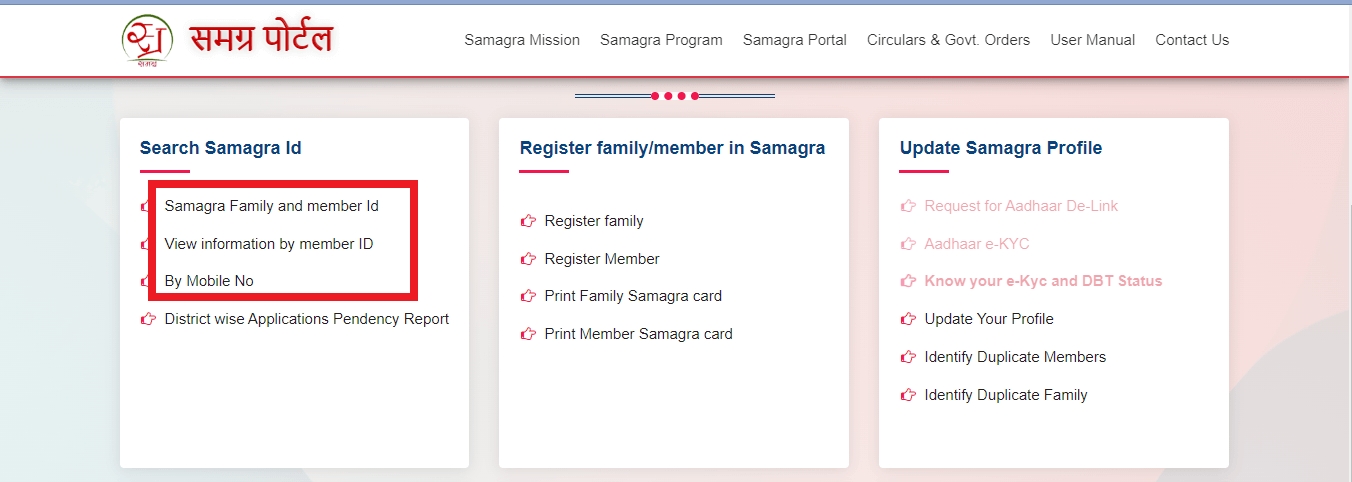
-
Select either of the three options by which you wish to search Samagra ID.
- Enter the required details in the selected category and search.
How to Find New/ Temporary Family/ Members?
Follow the below steps to find new/ temporary family/ members.
-
Visit the Samagra Portal
-
Under ‘Find New/ Temporary Family/ Member’, you can find new/ temporary family/ members in 5 ways.
-
New/ Temporary Registered Family
-
New/ Temporary Registered Member
-
Temporary ID
-
Temporary Family Member ID
- By Mobile Number
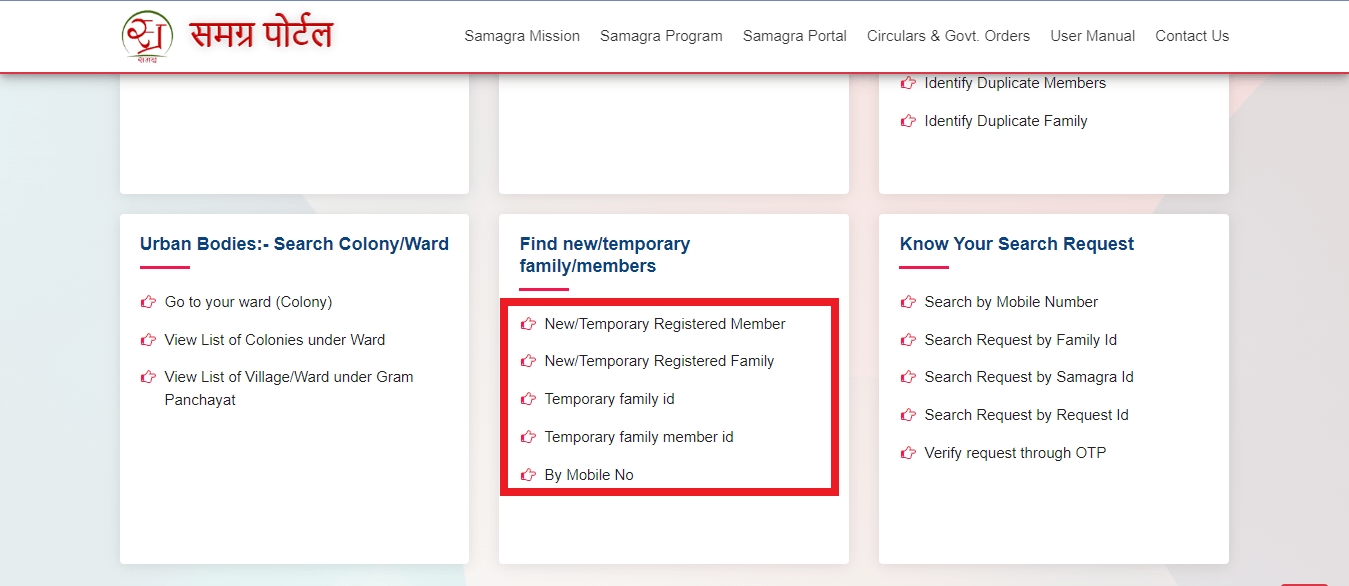
-
Select either of the five options by which you wish to search Samagra ID.
- Enter the required details in the selected category and search.
How to Know your Search Request?
Follow the below steps to know your search request.
-
Visit the Samagra Portal
-
Under ‘Know your Search Request’, you can know your search request in 5 ways
-
Search by Mobile Number
-
Search Request by Family ID
-
Search Request by Samagra ID
-
Search Request by Request ID
- Verify Request through OTP
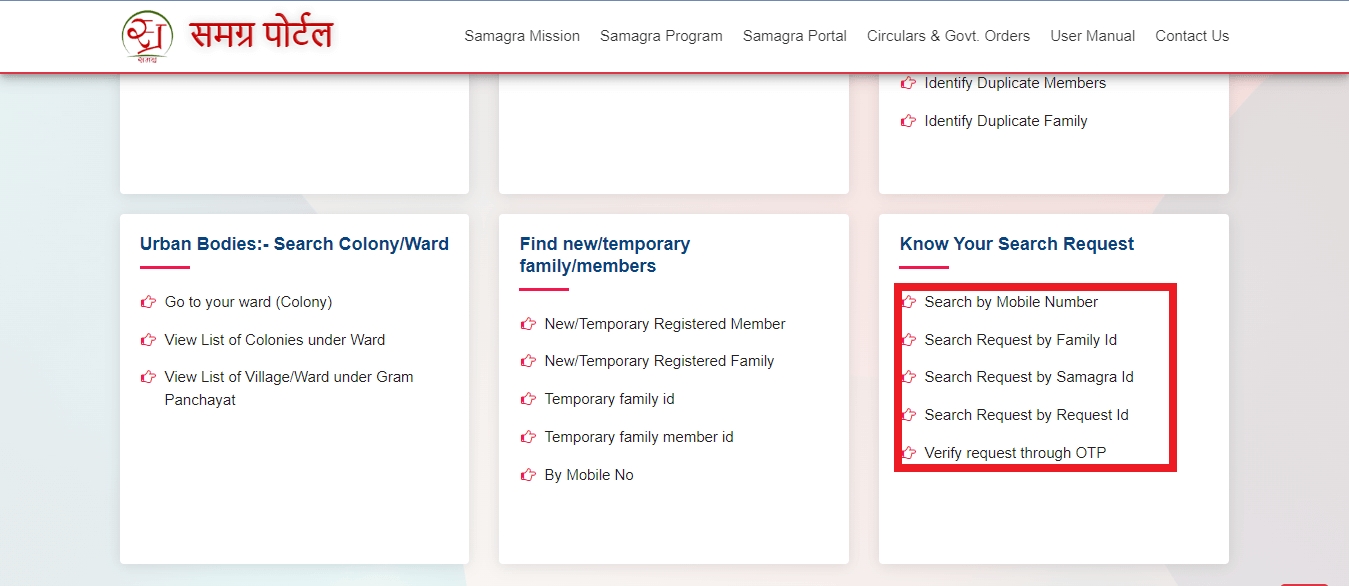
-
Select either of the five options by which you wish to search Samagra ID.
- Enter the required details in the selected category and search.
References
While crafting this guide, we have consulted reliable and authoritative sources, including official government directives, user manuals, and pertinent content sourced from government websites.
FAQs
You can find a list of common Government Schemes queries and their answer in the link below.
Government Schemes queries and its answers
Tesz is a free-to-use platform for citizens to ask government-related queries. Questions are sent to a community of experts, departments and citizens to answer. You can ask the queries here.
Ask Question
 Share
Share




